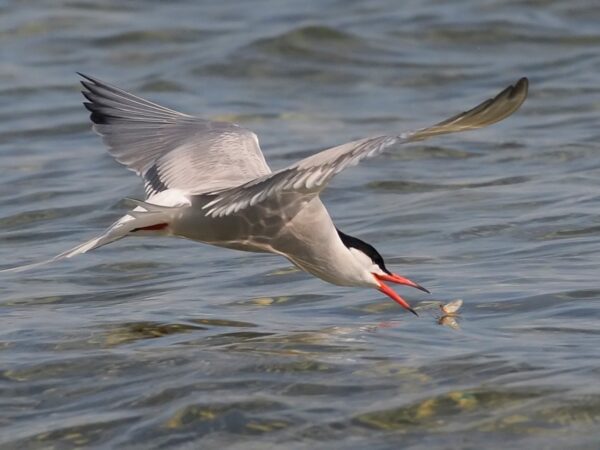
Ducklings struggling to stay afloat in Lake Ontario’s Toronto harbor now have a safe place to rest with the installation of low, floating plywood docks.
PortsToronto installed duckling docks at water level in four shipping areas in June after reports of drowned waterfowl unable to climb out of the water to rest.
Despite the saying ‘like a duck to water,’ ducks aren’t born waterproof and can easily drown or catch hypothermia if they don’t have a resting place at water level to climb onto for a break. Until their oil glands are mature enough to coat and waterproof their feathers, they cover themselves with their mother’s oil when they huddle against her on land. It can take two to three months before they are no longer in danger of becoming waterlogged and drowning.

Newly installed duckling dock (Photo courtesy of PortsToronto)
But parts of Toronto’s harbor are lined by high dock lines intended for ships, making it impossible for ducks to climb out and rest. The problem with these areas came to light this spring when a kayaker contacted local media with her concerns.
“We have an active canoe and kayak community in the harbor, and this kayaker was noticing a lot of drowned ducklings,” said PortsToronto spokesperson Deborah Wilson. “I don’t think anyone realized this was a problem. I certainly didn’t know ducklings weren’t waterproof.”
Just 48 hours after port staff read the article, the docks were in place. “Sometimes these things can get mired in too much consultation,” she said. “We thought, ‘We have jurisdiction over the majority of the harbor and we build infrastructure for a living.’”
The ports authority consulted with the Toronto Wildlife Centre for advice on how to design the docks and where to place them. Each dock, essentially a wooden platform 12 inches wide and 6 feet long, is attached with a couple ropes to an existing floating dock or dock wall. Their beveled edges make it easier for ducklings to climb aboard.
The docks can quickly get covered in smelly guano, so staff occasionally haul them up to hose them off. The docks are also branded with PortsToronto’s logo so that they are not mistaken for debris and removed.

Newly installed duckling dock (Photo courtesy of PortsToronto)
Calling it a simple solution to a large problem, the wildlife center’s rescue and relief manager Andrew Wight said the docks are not only helping the harbor’s mallard ducks, but also a range of other waterfowl.
“Mallards breed from April to late summer,” said Wight. “If a clutch is lost, they will try to breed again so the platforms will be in place during the warm months so the little guys can get out when they need to.”
Wight said he knows of just one other use of duckling docks – on Ottawa’s Rideau Canal.
Meanwhile, Wilson said local private marinas and Toronto’s Habourfront Centre – a waterfront park owned by the government of Canada – have reached out to PortsToronto about getting their own duckling docks.
“We’re happy to build and install them. It’s basically just a piece of plywood that probably costs about $20,” said Wilson. “Nobody wants to look at a duckling that hasn’t made it.”
Catch more news on Great Lakes Now:
Birds and Brews: Pour one out for the piping plover
Piping Plovers: Despite new challenges, the birds make their comeback
Duck Stamp: Little stamp has big impacts in the Great Lakes and nationwide
API key not valid. Please pass a valid API key.Featured image: Newly installed duckling dock (Photo courtesy of PortsToronto)




